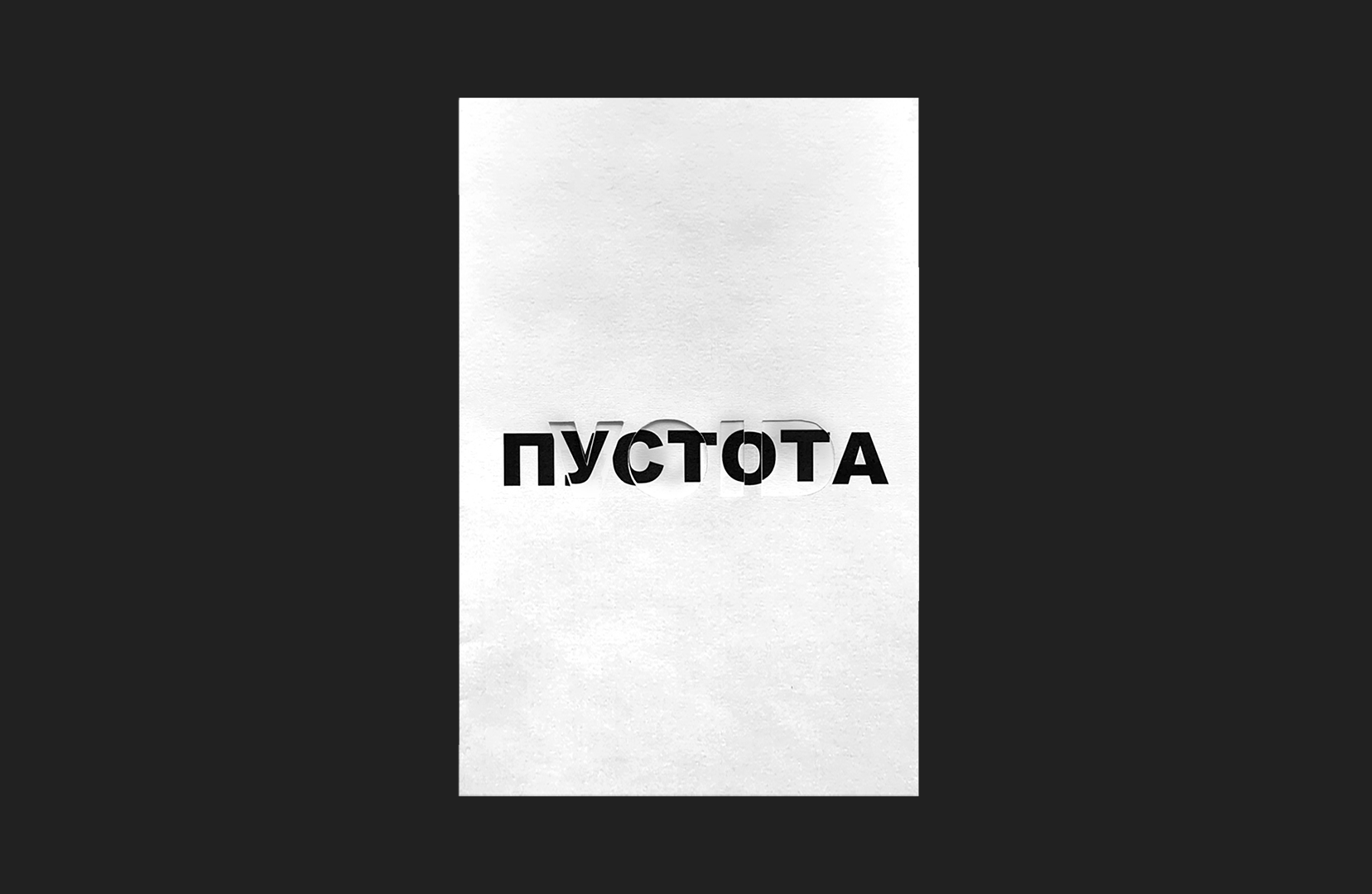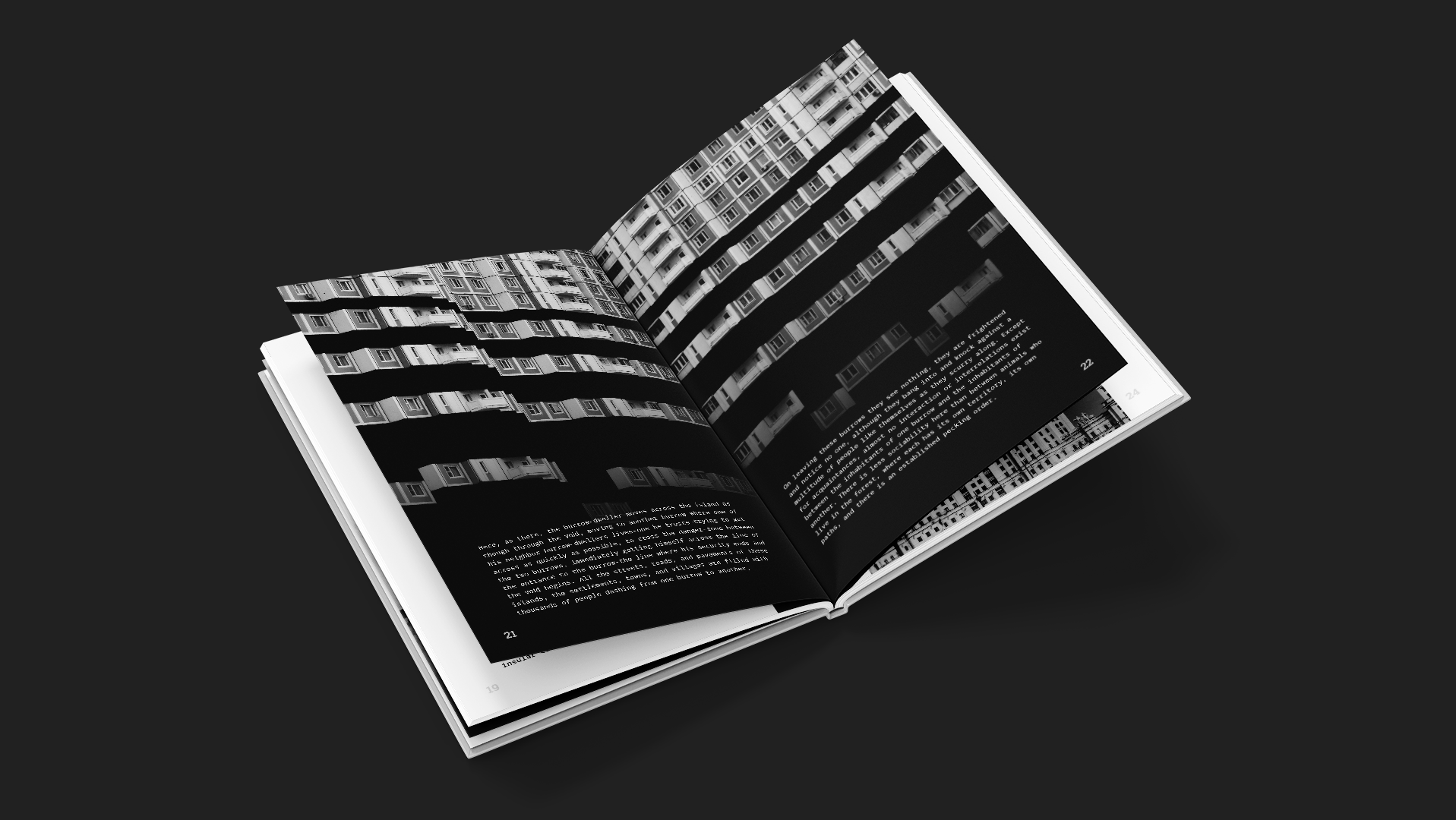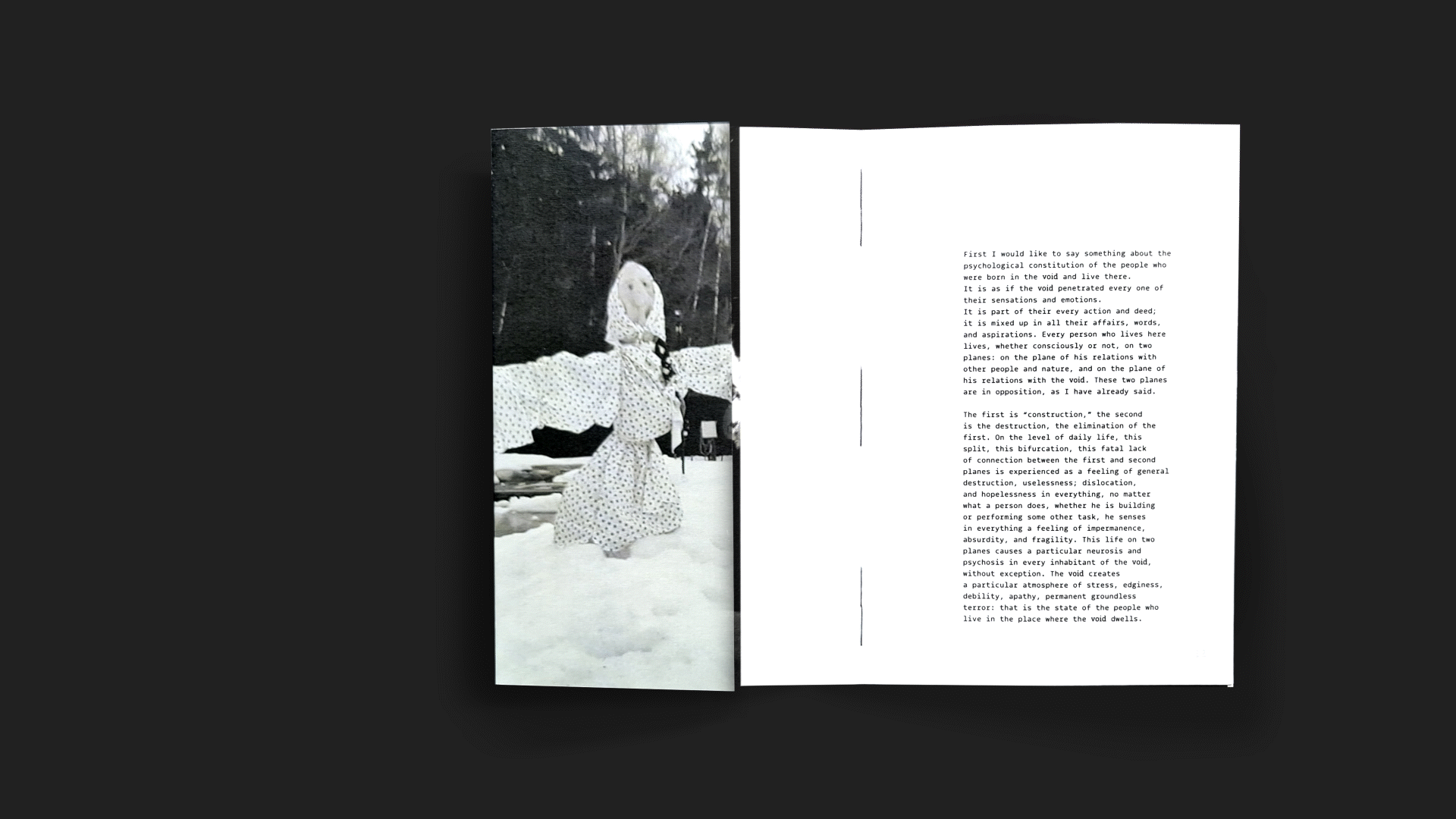

Maria Lokshina
VOID

Пустота
"VOID" is digging around with a rusty spoon in an open wound; an introspective, reflective look at the memory of my homeland, from afar. It is a project that explores the experience of being a Russian and attempts to address and process personal cultural trauma. The resulting artifact is a bilingual print publication that interweaves my personal notes with an essay by Ilya Kabakov, a prominent conceptualist artist. To It attempts to communicate the particular feeling of an encroaching, everpresent "void" that nullifies all effort and devours you whole, leaving nothing but the void itself.
"VOID" reaches out to the outsider audience to help them understand the mysterious Russian soul — while to other Russians it gives voice to emotions that we are culturally barred from expressing.
Within the scope of this project, I explore my conflicted feelings about Russia. Being physically disconnected from it due to the pandemic, unable to influence anything, I was forced to confront my cultural trauma, and face the memories that I was running from.
The idea of an “incomprehensible Russian soul” is integral to Russian culture and the researchers working on it — both inside the country and outside of it. Winston Churchill had famously described Russia as “a riddle wrapped in a mystery inside an enigma”. Situated between the collectivist, spiritual East and the individualist, materialistic West, Russia is a melting pot of ideologies, a land of paradoxes and contradictions, where incompatible traits coexist: it’s mother to the collectivist individualist and the archetype of a defensive warrior; it’s the culture where the concepts of a sweet sadness (pechal’) and a yearning for that-you-know-what (tos’ka) are the norm; where the void has penetrated into every fibre of life.
The Russian concept of the void differs from the European: it is not a space to be conquered and moulded into the desired, useful shape by the hand of man, but, rather, an active entity, an antiparticle to life. It is a familiar, well-trusted enemy. Living with the feeling of its presence is exhausting — it drains you out, and drives you mad with its absurdity. Ilya Kabakoff, the man whose essay lies at the heart of this publication, had phrased it the best:
"This life on two planes causes a particular neurosis and psychosis in every inhabitant of the void, without exception". 1
I know this feeling well. It had permeated every day of my life in Russia, and only after coming to New Zealand had I realised that it was not the norm. So with this project, I had set out to bridge this cultural divide, and give a visual representation to the "void" that is unseen. The publication plays around with the concepts of space by introducing cutouts and folds in the layout, adding an interactive element to the narrative. Due to the physical distance, the photography was sourced from personal, familial and free-licenced online archives— so the visuals are a combination of my memories, and the memories of others.
To me, finishing this project was therapeutic, in a sense: I was finally able to let go of my grief over the country that never was.
_________________________
1 Kabakov, I. (1981). On the subject of “the Void”. Atlas of Transformation. shorturl.at/wOQW6


